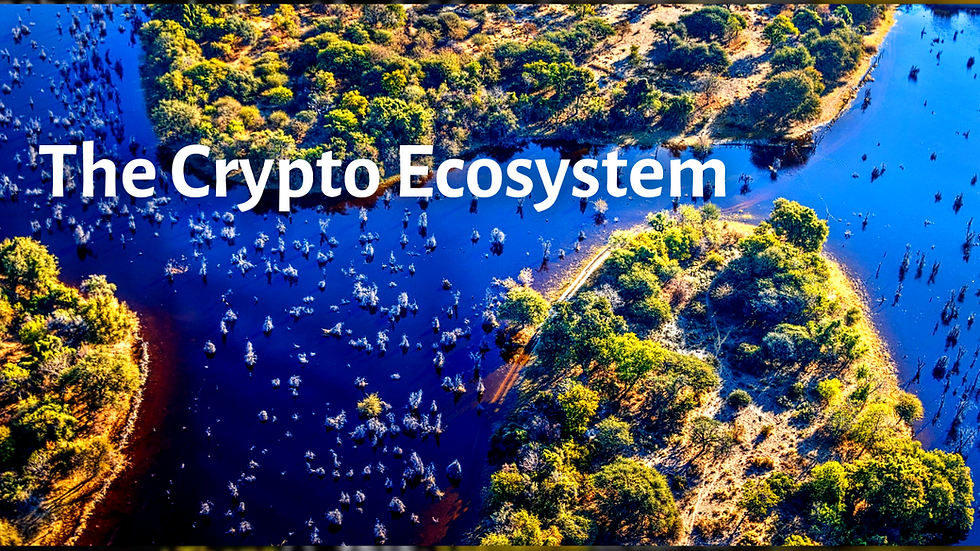
I lived three blocks from the ocean in the Pacific Beach section of San Diego. Most days, I would take a long bike ride and finish at the beach to watch the sun disappear over the horizon. At night time, I'd sleep with my window open and listen to the waves crashing against the shoreline.

I marveled at the power and beauty of the ocean, but I didn't appreciate it as an interdependent ecosystem until I had a summer job at Sea World as a tour guide. During my training (in the 80s the word "onboarding" hadn't been invented yet), I was handed a three-inch binder filled with photos and facts of all the animals and plants at Sea World. I was instructed to prepare ten talks about the park's attractions. I learned about whales, dolphins, penguins, sea lions, walruses, sharks, fish, and the tide pools. I also discovered that the oceans function as an interconnected system. They are fragile and resilient. Ten years after living in San Diego, I moved to South Florida. As an environmental lawyer, I had an opportunity to learn about another ecosystem – wetlands.

In the mid-1990s, Broward County developers were building new homes on massive tracts of farmlands that were once thriving wetlands.
As a condition to obtaining a building permit, many developers had to agree to restore a portion of the property back to its original wetland condition.
Not surprisingly, many of the wetland projects languished and failed after the developers finished their work and homeowners associations had to maintain the wetland mitigation projects. A small patch of wetlands surrounded by roads and homes didn't have much a chance to survive. One solution to the failing mitigation restoration projects was to aggregate tiny wetland projects into larger projects. I partnered with another law firm, an environmental engineering firm, and a world-renowned wetland biologist to create the first federally-permitted entrepreneurial wetlands mitigation bank in the US. We borrowed the concept of carbon credits and created Florida Wetlandsbank. We sold wetland credits to developers and used the money to build a 345-acre thriving wetland. The project was successful and we replicated it elsewhere.

Fast forward to today and I'm living next to another wondrous ecosystem – the protected forest of the Watchung Preserve in New Jersey.
Walking the trails daily (without my iPhone) is calming and inspiring. Watching how the forest and animals adapt to the seasons is fascinating.
However, I didn't understand the forest in my backyard until I started reading about trees.
Trees in a forest are part of a community that work together.
Look up at the canopy and you'll see that most trees stop growing its branches when it touches another tree's branches at the same height. This ensures better air flow and light for all the trees. Nature teaches us that healthy ecosystems evolve by developing a system of inter connectedness. Weak connections fail and strong ones take their place. The healthy trees, plants, and animals survive and thrive. I see this happening in the crypto ecosystem. In May 2022, stablecoin USD Terra was not able to maintain its correlation to the US dollar because it was built on a faulty foundation. Unlike Tether and USD coin which are backed by assets such as cash and short-term US government securities, Terra was an "algorithmic stablecoin." As withdrawals increased, it sought to prop up its stablecoin by creating new coins, Luna coins. The best lay explanation I read was from CZ, CEO of crypto exchange Binance. He said, "The design flaw: minting coins (printing money) does not create value, it just dilutes the existing coin holders." When the dust settled, $50 billion disappeared. USD Terra wasn't a lone tree in the crypto forest. It had roots connected to other crypto trees. Celsius, a crypto lending platform, was having problems recovering money from its customers and froze customer withdrawals in June. Celsius had managed $11.4 billion in assets and had 1.7 million customers. As Celsius was collapsing, it lost billions of assets from hedge fund Three Arrows Capital. And as reported below, Three Arrows filed for bankruptcy protection last week. Other impacted crypto players include BlockFi and Voyager. As Nik Bhatia and Joe Corsorti published in their newsletter, "This all made for a spectacular ‘Lehman moment’ for crypto — only in this instance, there are no bailouts. The free market immune system did its work by eliminating the fragile market participants. Only strong, healthy balance sheets will survive." Bitcoin is fundamentally different than the crypto companies who have died or are on life support. Those who hold bitcoin are not holding someone else's liability.
I believe the crypto ecosystem is being challenged and that it will survive.
Comments